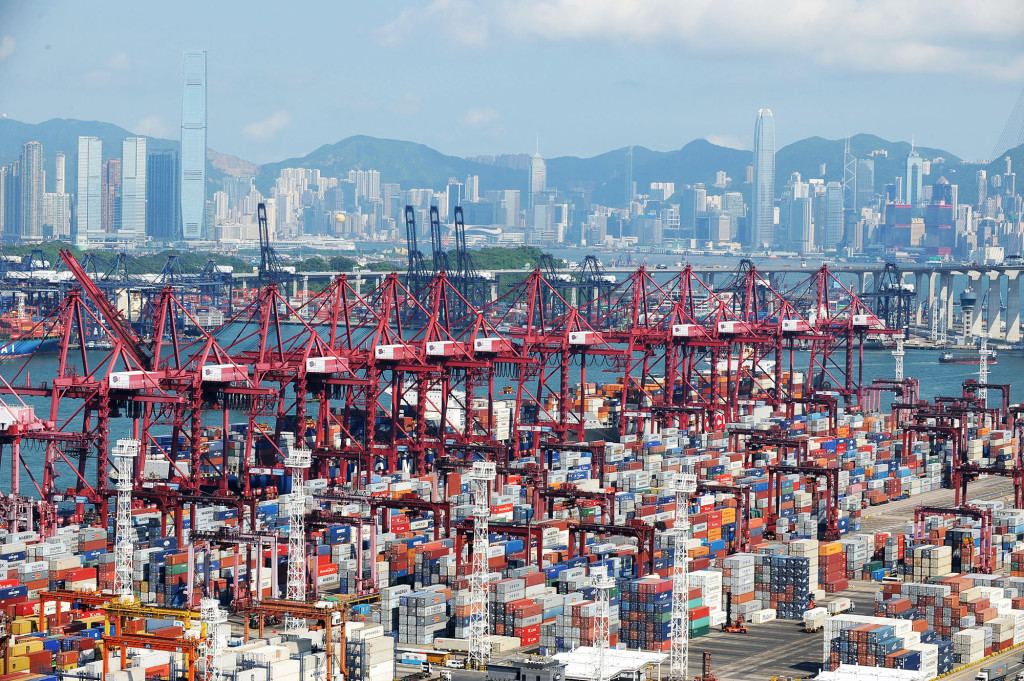What is the most effective port-city policy? A straight-forward question, but not an easy one to answer. There are three difficulties to distinguish: 1) how to compare port-cities that can be very different from each other; 2) how to compare impacts that might be incomparable; 3) how to establish effectiveness?
No port-city is similar
This is almost too self-evident to make much of a point of it. Ports are different in size, specialization, performance and location. Cities differ with respect to their reliance on the port for employment and value added. Combining the differences of ports and cities gives a large variety of set-ups; Koper is not Shanghai. Yet there are also things that port-cities have in common: economic pathways, spatial imprints and – more esoteric – a local mentality that is more entrepreneurial and cosmopolitan than in other cities. There is something that makes port-cities different from other cities; that is also the reason why the port-city is frequently used and why port-city conferences foster.
Impacts are not comparable
Most economic impacts can be quantified and monetized, which makes them comparable; but only to some extent because there are differences in definitions, methodologies and measurements. Other impacts are more difficult to compare; sometimes there are calculations of costs of urban congestion, but what is the part of port-related traffic? There are methodologies to express environmental impacts in money-terms, but there again, much depends on the reliability of the assumptions and methods – and not many cities have actually done this. Much is educated guesses, rather than exact science.
How to measure effectiveness?
Surprisingly little academic work has looked at the effectiveness of policies for port-cities. The public perception of best practices in port-cities is often based on effective marketing rather than thorough understanding on the conditions for successful policies. We did a modest effort ourselves (Merk and Dang, 2013), but much work needs to be done to understand which policies have made life better in port-cities and for what reasons.
Emissions as the most pressing port-city challenge?
All the text so far serves as a caveat, introducing our own educated guess. We use the assumption that what is characteristic for most port-cities is a certain mismatch between “costs” and “benefits”: costs are very localized (such as traffic and environmental impacts), whereas benefits (mostly economic) spill over to areas other than the port-city (OECD, 2014). This in a way inevitable and also points to the wider role of ports; cities have of course tried to use their port as a tool for economic development, but with mixed success. Traffic impacts of ports can be severe, but even in the most extreme cases represent relatively small shares of total urban traffic.
Air pollution, however is a different story: shipping emissions account for a considerable share of urban emissions in many port-cities, up to half of all emissions in Hong Kong for example. Calculations suggest that shipping-related emissions of particulate matter (PM) are responsible for approximately 60,000 cardiopulmonary and lung cancer deaths per year, mostly occurring near coastlines (port-cities) in Europe, East Asia and South Asia (Corbett, 2007). Our own estimations indicate that approximately 230 million people are directly exposed to the emissions in the top 100 world ports in terms of shipping emissions (Merk, 2014). According to our calculations, the external costs of shipping emissions in ports account to almost EUR 12 billion per year in the largest ports in the OECD with respect to NOx-, SOx– and PM-emissions (Merk, 2014).
High effectiveness of emission control areas
So, high stakes and big improvements to make. There is some room for ports, in terms of information (emissions inventories), incentives (lower port tariffs for cleaner and slower ships) and infrastructure, such as shore power-facilities. And, indeed, a few ports have been very active in this. However, their overall impact is relatively small and it is fair to say that international regulations had a much larger impact on port-cities. This is well illustrated by some of our data. European ports have much less emissions of SOx (5%) and PM (7%) than their share of port calls (22%), due to EU regulation to use low sulphur fuel at berths and the emission control areas (Merk, 2014). With the introduction of 0.1% sulphur requirements in emission control areas these effects have extended to wider areas.
The port and city of Hong Kong. (© Information Services Department, HKSAR Government, 2013)
Not to the Mediterranean. Although there have been discussions about establishing an ECA in the Med, ECAs are currently only in force in North Europe (Baltic Sea and North Sea), and North America (as well as the US Carribean). For port-cities and their populations the introduction of an emission control area could be a significant improvement of their quality of life. Port-cities could be more active in pressuring for such a measure, similar to the pressure that the Hong Kong government is putting on the Chinese government to turn the Pearl River Delta into an emission control area.
References
Corbett, J., et al. (2007), “Mortality from Ship Emissions: A Global Assessment”, Environmental Science and Technology, Vol. 41 (24), pp 8512–8518.
Merk, O. (2014), “Shipping Emissions in Ports”, ITF Discussion Paper 2014/20, International Transport Forum, Paris, France.
Merk, O. and Dang, T. (2013), “The Effectiveness of Port-City Policies: A Comparative Approach”, OECD Regional Development Working Papers, 2013/25, OECD, Paris, France.
OECD (2014), The Competitiveness of Global Port-Cities, OECD, Paris, France.
Head image: Shipping in the port-city of Rotterdam. (© Freek van Arkel, 2014)
